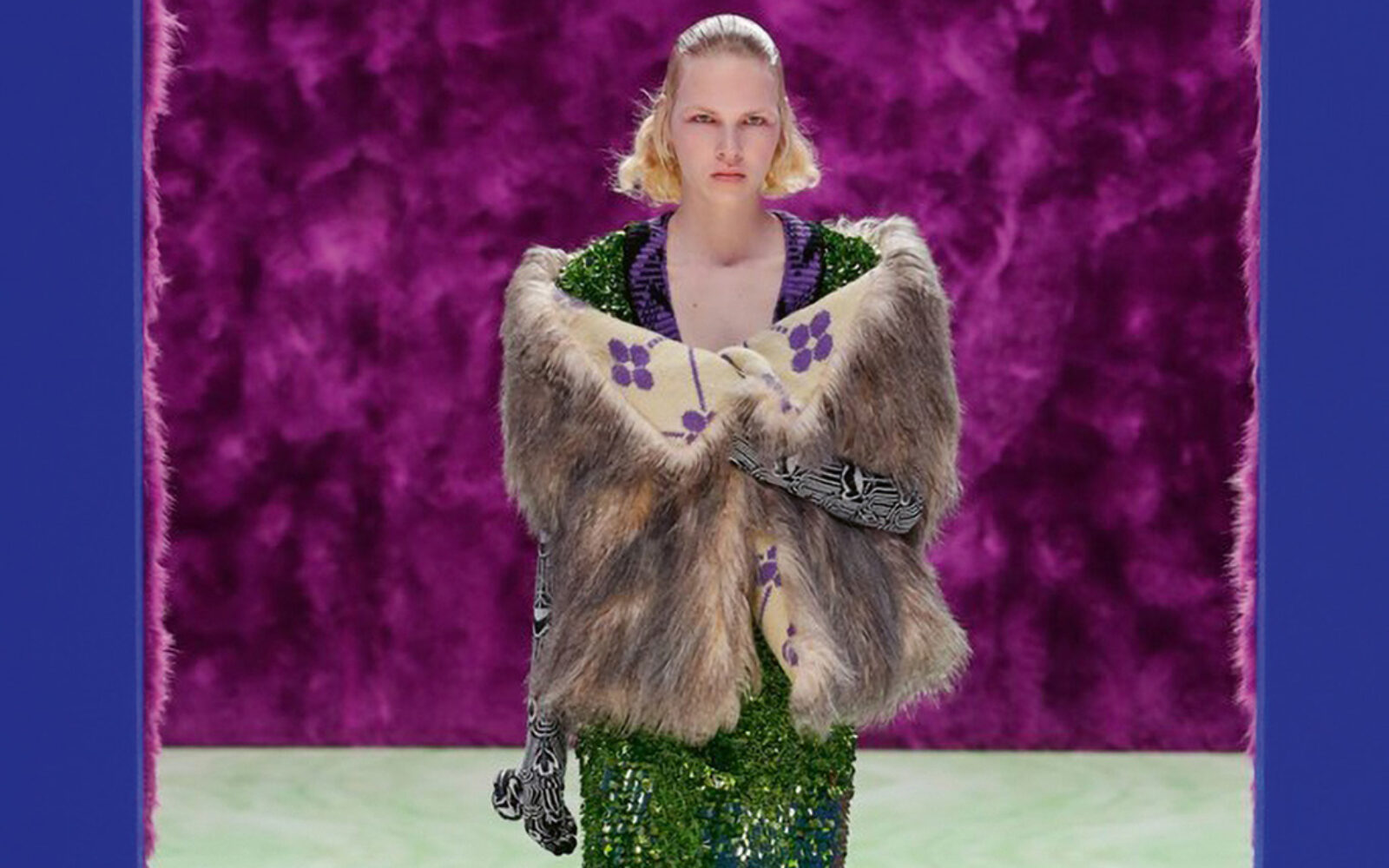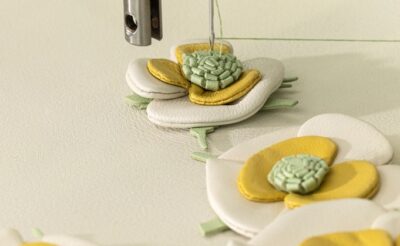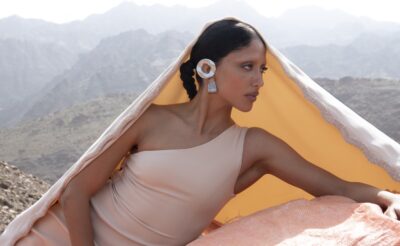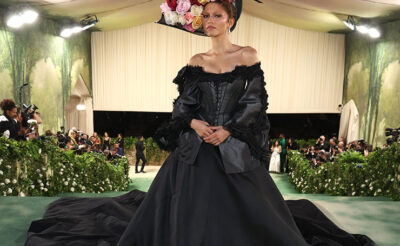In the post-pandemic world, the fashion industry is fighting back and helping us transition back to normality by embracing bold colour, clashing prints and gowns with exaggerated silhouettes
As the effects of global vaccination programmes come to the fore, travel resumes, going out replaces staying in and cities bustle once again, fashion is turning to the maximalist trend to ring in the roaring ‘20s 2.0 in OTT style, and Autumn Winter ‘21 looks set celebrate and encourage the art of dressing up over our previous propensity for loungewear, light layers and more streamlined silhouettes. According to a recent trend report by Mintel, a global market research and insight firm based in London, one-third of consumers are looking forward to having more occasions to dress up for, and that figure grows to nearly half among women aged 18-34, even though it predicts loungewear isn’t going anywhere. But to really make sense of the juxtaposition of the pre-pandemic look, which was already veering towards the almost austere uniformity of a collective loungewear aesthetic, and the current trend for more is more, we have to acknowledge that minimalism, clean lines and a more restrained way of dressing had become synonymous with style because in the post-recession era, simple living, slowing down and making more considered purchases all fed into a more mindful psyche, whereas we’re now looking for new ways to express and celebrate a return to life as we knew it pre-Covid.

Azzi & Osta FW21/22 Haute Couture
It’s not just a whim or reactionary reflex either – there’s a psychology behind the current zeitgeist and why we’re embracing the maximalist trend in all its glory and it boils down to making ourselves happy first and foremost, as fashion psychologist and author of Dress Your Best Self, Dr Dawnn Karen elaborates: “Mood enhancement dressing is dressing to optimise your mood and mood illustration dressing is dressing to perpetuate your current mood. However, with this shift that occurred during the pandemic, we were more inclined to dress for internal factors. In my book I have a chapter titled ‘Are you dressing for yourself or someone else?’ and I wrote this pre-pandemic but it’s very accurate. People pre-pandemic were dressing for external factors such as the weather, friends and family, their partner, their boss. During the pandemic people didn’t have those external factors, they had to deal with themselves – ‘How do I want to dress today?’ ‘How does this make me feel?’ They were now being driven by internal factors. They could dress to mask how they feel or heal something they’re going through. They were forced to change their relationship to their actual clothing and to reevaluate why am I wearing this.”
She also believes the pandemic gave people the freedom to experiment with different styles and trends and post-pandemic she’s seeing a lot of fashion inspired by the 1980s, the decade that celebrated and promoted literal and figurative excess. “Wearing loungewear which was pretty thin in silhouette and fabric, you didn’t want all that excess on your body indoors, but now that we’re outdoors we are into the excess because we were basically deprived. Now there’s an insatiable desire to hold out on to everything we have and then some. Having that collective anxiety from that collective uncertainty, we’re going to grab a hold of something and I think that’s where the excess comes in,” she elaborates. It’s also harder to get close to an exaggerated shoulder pad, and Dr Dawnn believes that our leaning towards maximalism is also an unspoken declaration about preserving social distancing rules prompted by the pandemic and consequently protecting our personal space in the process. “It also makes me think of the Hazmat suit or wearing something that makes you feel more protected,” she adds. “Perhaps we could be more inclined subconsciously to adopt ‘80s fashion because it’s big and fluffy and more of a protective layer. The ‘80s to me were edgy and that’s mood enhancement or dopamine dressing. Because where you are invoking mindfulness when you’re selecting your clothing, dopamine is released in the brain.”
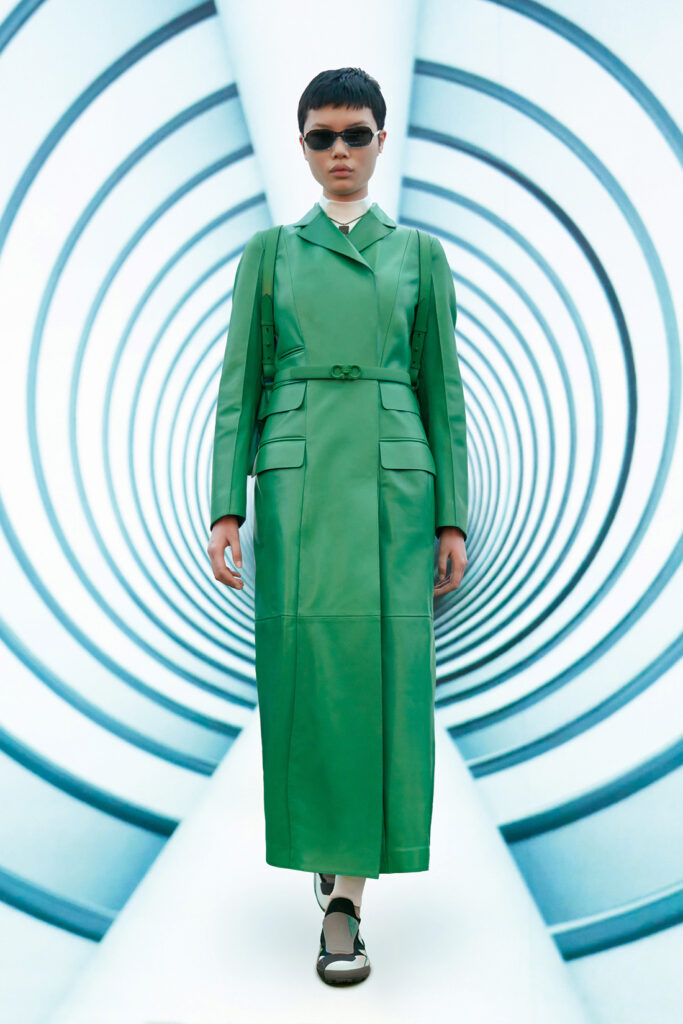
Ferragamo FW21
On the 2021 runways – virtual or otherwise – designers have been championing exaggerated silhouettes, saturated shades and an elevated attitude to the everyday, leaving minimalism in the shade. At Versace, Gucci, Ferragamo, Rejina Pyo, Off-White and Prada, outerwear and suiting all followed the same vibrant, mood-boosting palette of hot pink, cobalt blue and emerald green, while Burberry, Alexander McQueen, Celine and Louis Vuitton played with proportions via voluminous skirts, dress shapes and power shoulders. Embellishment to elevate the everyday was seen at Erdem and Dries Van Noten, chintzy heritage florals in muted tones came courtesy of Ulla Johnson and Acne Studios (and quite possibly Netflix’s runaway period hit, Bridgerton), and logo mania returned in all its overstated splendour at all the big fashion houses with Loewe, Balmain, Gucci, Versace, Marc Jacobs and Max Mara simultaneously turning to the past to create an almost ‘70s style monogrammed mood.
“We definitely feel a sense of optimism from our customers excited by the opportunity of dressing up again. I t will be a welcome contrast to how we have been living during the pandemic and I think this is why we are seeing a more maximalist approach to dressing through colours, prints, fabrications and silhouettes,” Liane Wiggins, Head of Womenswear Buying at MatchesFashion offers. “There are so many great pieces to embrace this joyful mood from Thebe Magugu’s hot pink suits and Lisa Folawiyo’s eye-catching printed sets to 16Arlington’s feathered jeans and Molly Goddard’s tulle gowns. Across accessories we have seen great engagement in the recently launched rainbow platforms from Salvatore Ferragamo and colourful jewellery from Fry Powers.” Wiggins has also seen the maximalist trend surge across homeware too as consumers look to uplift their spaces and play with contrasting prints and bright colours via tablescapes and interchangeable soft furnishings in particular, and popular pieces include London-based Yinka Ilori’s bold and bright ceramics, The Elder Statesman for eclectic cushions and throws and La DoubleJ for hand-painted, gilt edged tableware and colourful glasses handmade on the Venetian island of Murano.
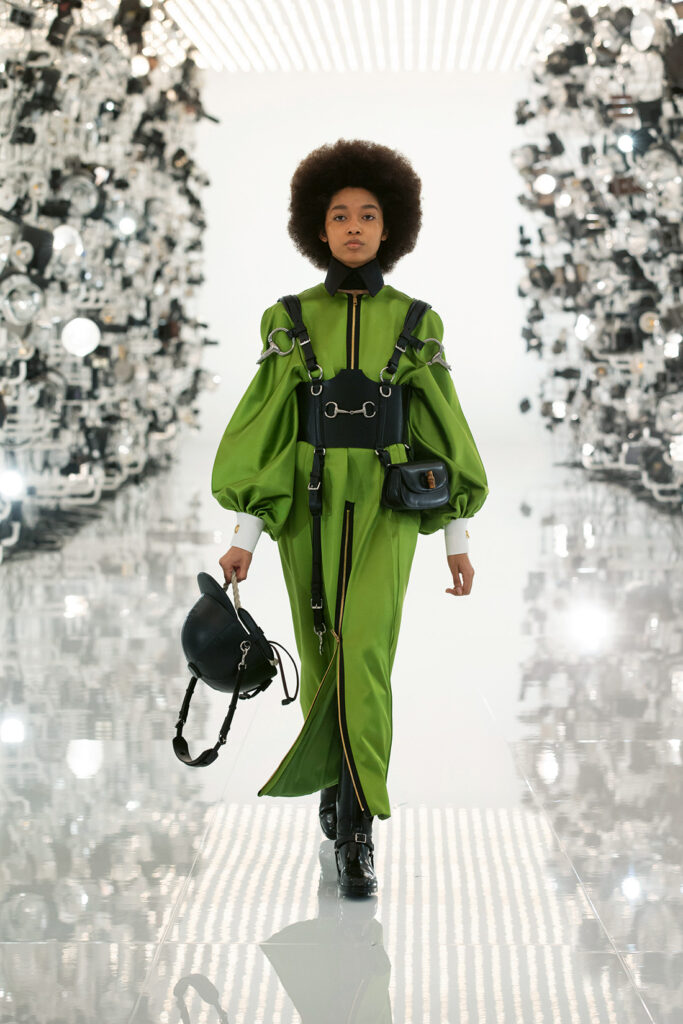
Gucci
For Lebanese design duo Azzi and Osta, their customers are reacting to the easing of restrictions and return to the new normal in a similar fashion. “During the Pandemic, we all wanted an escape and after the pandemic, with news of the vaccine and restrictions lowered, people want to rejoice, celebrate, bring back what they put on hold, and do it big,” they suggest. “Covid has probably highlighted individuality, power of choice, reason to buy and reacting to the world. All these translate in fashion whether functionality, outerwear, holiday wear or dressing up for celebrations. We believe the titles are more highlighted and the purpose behind each choice is more accentuated hence celebrating will be in its full sense, just like vacationing will be in its full sense – people will want to put their all in each period/event of their life going forward, and hopefully for a long while.”
A sentiment shared by Saudi-born, London-based Ziyad Buainain who crafts his collections from dead stock, new and recycled fabrics to help address the systemic problems of overproduction and consumption. “I think consumers are wanting to wear statement pieces more than ever now that restrictions are being lifted and places have started to open up again,” he observes. “It’s definitely a reaction to being restricted to loungewear for over a year and many are overcompensating for what they couldn’t wear during the worldwide lockdowns. Living in uncertainty during the pandemic, I believe, has now made people embrace the present and make bolder fashion choices.” While he suggests that dressing up never really went away and was just momentarily halted for a while, he does recognise that people are making a lot more effort with their looks now that there are places to go and events to attend, which weren’t possible during periods of lockdown. “I think we’re now paying more attention to dressing up and enjoying the process of it,” he adds. “We’re having more fun picking and choosing what we wear and trying to look and feel our best.” For Buainain this translates as unapologetic self-expression and not being afraid to stand out. “This could mean mixing prints, embracing bold colours and textures, wearing voluminous pieces, and/or styling looks with striking accessories – there aren’t really any rules to achieving a maximalist look,” he illustrates. “It’s all about the drama but it also has to have a sense of visual unity and harmony.”
And while there’s a distinct celebration of more is more in theory, in practice this doesn’t necessarily equate to more impulse buying, and Azzi and Osta have found that purchases are more considered than ever as the current iteration of maximalism is more environmentally conscious, and the awareness surrounding sustainability is steadfast. “Clients are really much more socially and worldly aware… people always shared views and convictions however now more than ever they actually process and action the reason behind,” they detail. “This means they ask more, they value the experience more, impulse buying has been replaced by conscious buying, wanting to invest in what is timeless, valuable, and personalised. Those habits did exist pre-pandemic but were shy, however now we feel they are the main focus and the reason behind most luxury buying decisions they make.” Switched on, sparking joy and with a healthy dose of peacocking thrown in for good measure – there’s a lot to be cheerful about for the season (and months) ahead.
Read Next: How The Demand For Luxury Pre-Loved Items Is Disrupting The Fashion Industry
- Words by Aoibhinn Mc Bride

